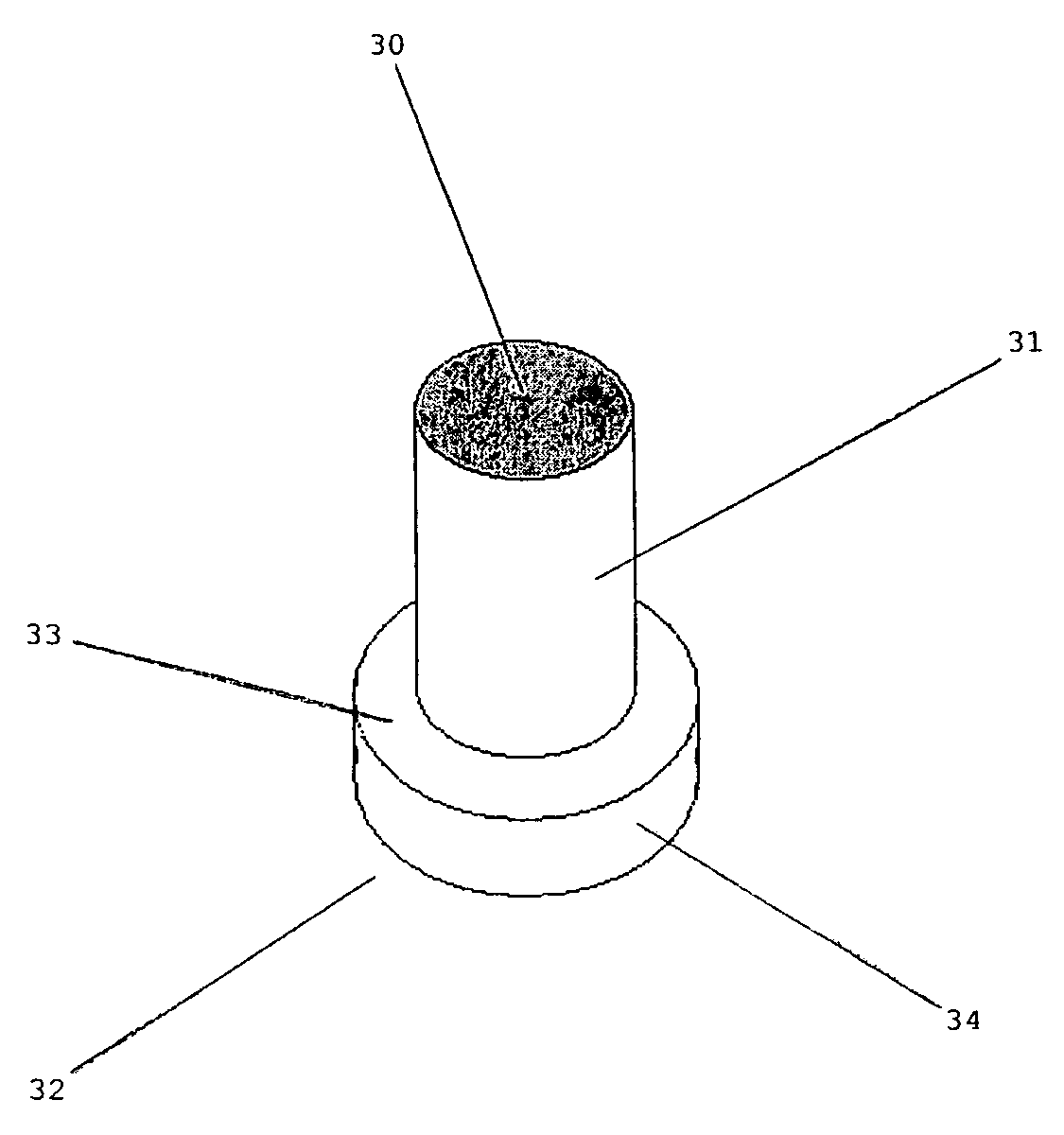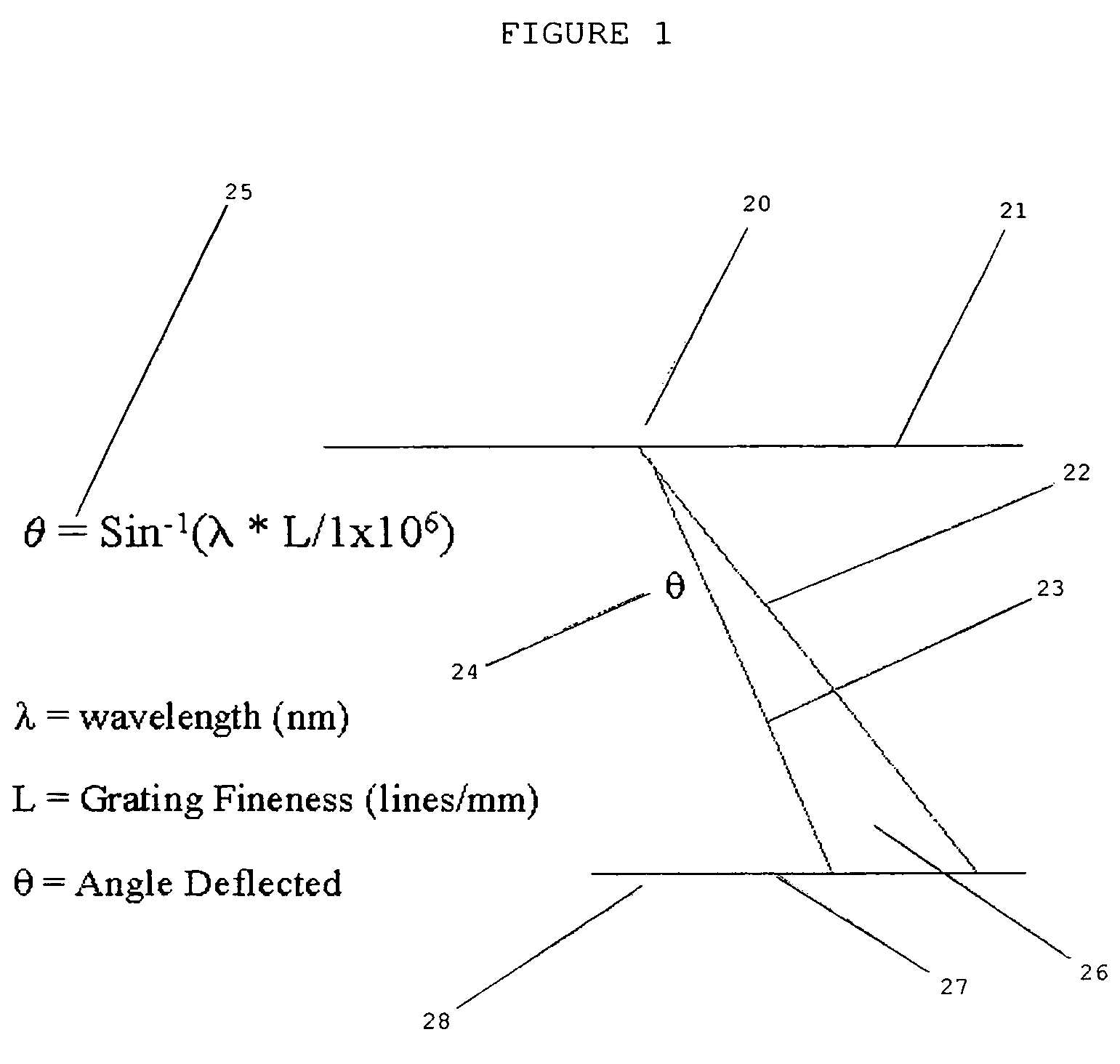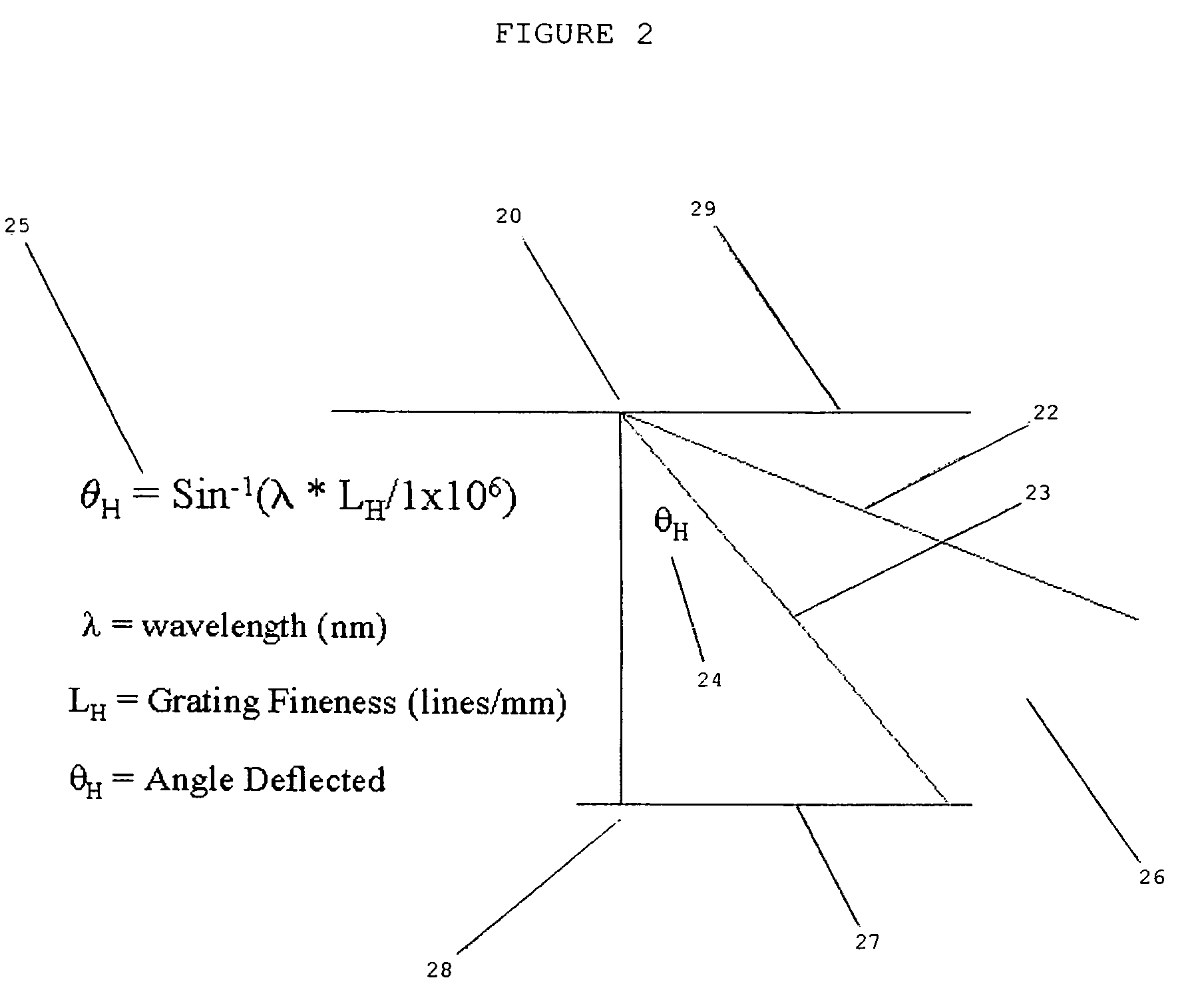Apparatus to produce spectrums
a spectrum and apparatus technology, applied in the field of apparatus to produce spectrums, can solve the problems of difficult to find a device that will work with readily available equipment, few of these devices will work with the other products needed, and most of the available spectrum equipment is out of the reach of ordinary people's budgets, so as to achieve the effect of compact spectrum
- Summary
- Abstract
- Description
- Claims
- Application Information
AI Technical Summary
Problems solved by technology
Method used
Image
Examples
Embodiment Construction
Overview
[0045]By fabricating the spectrum 26 separation device in such a manner that it will fit within the confines of the empty lens chamber, just in front of the sensor 27, of an available camera will provide a means to produce high quality referenced spectrums with little or no additional cost for other expensive equipment as is generally required.
[0046]The selection of a spectrum 26 device lends itself readily to using a grating 30 type of spectrum 26 device. These are generally easier to manufacture and are generally lighter in weight then are prism devices thereby reducing cost of manufacturer.
[0047]In order for any spectrum 26 device to provide the maximum amount of information the distance between itself and the light sensor 27, be it film, the human eye, or a CCD chip or anything else that is sensitive to light of any wavelength in the visible, ultraviolet and or infrared, is very critical.
[0048]In current technology the distance between the spectral device and the light s...
PUM
 Login to View More
Login to View More Abstract
Description
Claims
Application Information
 Login to View More
Login to View More - R&D
- Intellectual Property
- Life Sciences
- Materials
- Tech Scout
- Unparalleled Data Quality
- Higher Quality Content
- 60% Fewer Hallucinations
Browse by: Latest US Patents, China's latest patents, Technical Efficacy Thesaurus, Application Domain, Technology Topic, Popular Technical Reports.
© 2025 PatSnap. All rights reserved.Legal|Privacy policy|Modern Slavery Act Transparency Statement|Sitemap|About US| Contact US: help@patsnap.com



